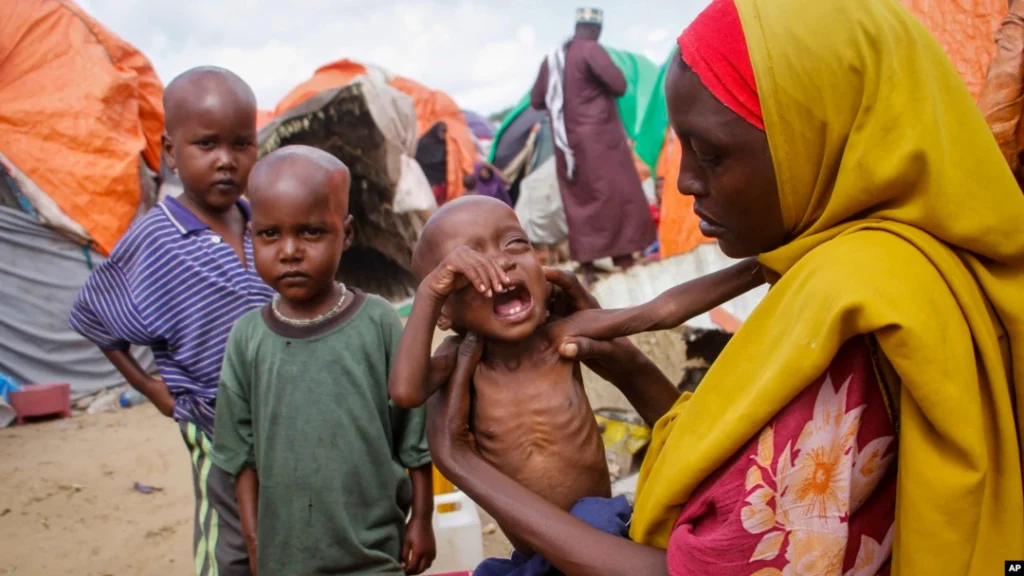The United Nations humanitarian office on Somalia says the country is still teetering on the edge of famine.
Ian Ridley, head of the U.N. Office for the Coordination of Humanitarian Affairs, or OCHA, in Somalia says there are almost eight million people in need of assistance and over one million people who have been internally displaced.
Somalia has already experienced four failed rainy seasons dating back to October 2020, Ridley told VOA’s Somali service.
Although it should be the beginning of the rainy season in Somalia, Ridley said, the forecast indicates the period will not bring the much-needed moisture.
“We’re all hoping and praying that the rains will come, but based on the recent patterns I think the weather forecast and the climatologists are telling us there’s a high probability that this next rainy season from October to December will fail,” he said in a telephone interview Sunday.
“That increases the risk of famine, and I would say we are teetering on the edge of famine particularly in Baidoa, and Burhakaba and particularly amongst IDPs (Internally Displaced Persons) in Baidoa.”
He said humanitarian agencies are now focusing all efforts on Baidoa and Burhakaba districts.
“The humanitarian community is really scaling up in support of the government to support people there to ensure that we can avert famine,” he said.
Humanitarian groups threatened
He said agencies are facing challenges including security and accessibility, which increases worries about the humanitarian situation in areas controlled by the Islamist militant group, al-Shabab.
“What we’re concerned about are people in the rural areas that are more difficult to reach, areas that are under the control of non-state armed groups, al-Shabab specifically,” he said. “We’re concerned about those areas, but we must continue to push out of the cities and towns into the rural areas and reach as many people as possible.”
Last week, officials in Somalia’s Jubaland state said the al-Shabab militant group killed 12 people drilling a well in the vicinity of Geriley village. The attack was preceded by al-Shabab raids targeting water wells in Galmudug and Hirshabelle states which the group destroyed in apparent retaliation of the local populations’ mobilization in support of government operations.
Meanwhile, a humanitarian worker in Somalia who requested not be identified for safety reasons told VOA Somali that on Saturday suspected al-Shabab militants also fired on a vehicle belonging a local aid organization in the south of the country.
“That marks a worrying turn in the situation when humanitarians are targeted. We do get worried,” Ridley said. “We need to understand exactly what’s happened before we draw conclusions, but I think it is reasonable to assume that there are forces, non-state armed groups in these areas that don’t want humanitarians doing their work. So, it’s a huge concern.”
Infrastructure at risk
On the recent clashes between the federal government forces supported by local fighters on one hand, and al-Shabab, Ridley said he is concerned that humanitarian workers can “get caught up” in the crossfire of the fighting. Another concern is that when there is a conflict in an area, telephone masts, clinics, schools, grain stores and water points are destroyed, he said.
“So, this new conflict marks, if you like, an increase in the number of people that are requiring humanitarian assistance.”
He said all sides to the conflict need to respect their obligations under international humanitarian law to allow aid workers to get unfettered access to populations, and for civilians to have access to assistance as well.
“Humanitarians shouldn’t be targeted, assistance should not be diverted, and humanitarian space needs to be given so that the national NGOs (non-government organizations), the international NGOs and the United Nations can get on with their work and serve people in need.”
